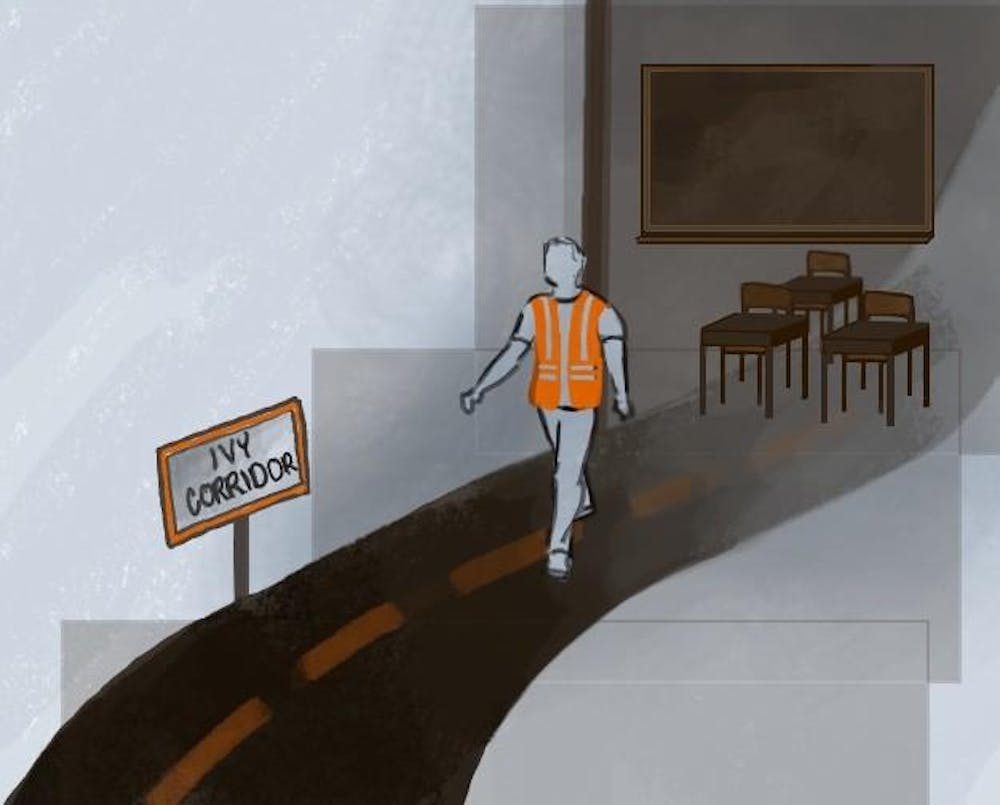The class of 2029 is entering into a University vastly different from the one prior classes saw. Just after the new Student Health and Wellness building was completed in 2021, the renovations on Edgar Shannon Library began and the Complemplative Commons project broke ground. In 2022, Gaston and Ramazani Houses began construction, as did Shumway Hall for the McIntire School of Commerce. Additionally, the new Ivy Corridor Projects are quickly progressing to finish in 2027. While the renovation of Shannon Library sought to renovate existing space, a tally of these changes sees the scales of growth tip in favor of outward expansion rather than improved utilization. Instead of focusing on outward expansion, the University should focus on internal expansion, specifically by working to utilize existing classroom infrastructure as much as possible.
This rapid expansion of Grounds is driven primarily by a capitalistic growth mindset which seems not to have an educative goal. A drive for more student housing implies a greater capacity for students, which means more tuition money, more research funding and higher prestige within the academic world. A new data school and Commerce hall entices more students to apply towards the same monetary goal. It is debatable that expansion is inherently a bad perspective to approach academia with, as a growing and profitable University does have student benefits — more research opportunities, better faculty and improved student amenities. However, the outwardly physical nature of this expansion is unsustainable and expensive.
Opportunity for physical expansion is inherently limited in a densely populated area like Charlottesville where land costs are high. Plentiful funding is a huge concern for future capital projects, particularly due to the email sent to all University employees informing them of a more conservative approach to funding. While it may often appear from the outside that new expansion projects are donor-funded, lots of the money actually is generated by the University. According to the 2024 Major Capital Plan, a master budget of University construction, most of the donations to physical expansion pale in comparison to the contributions of tax-free bond sales and the University’s own funds. Both situations are drains on the University coffers, and thus alternative, less costly methods of expansion should be pursued.
Luckily, cheaper methods exist, namely optimized utilization of existing space. Classroom and laboratory utilization deals with the percentage of the day or week that the space is being used. Empty classrooms means lower utilization and full classrooms means high utilization. The trend at the University is common to several other colleges around the country — during peak hours like 11 a.m. to 3 p.m., utilization is high, while in other hours or on Fridays, classrooms sit vacant. Maintenance costs for these vacant buildings are constant, while the actual value derived from the space is yet to meet its full potential. Instead of building out, finding ways to use the existing space at all hours of the day is a cheaper method of growing the academic size of the University, who can use the saved money on other projects.
But first, University administration must give utilization rates appropriate attention. The latest study conducted by the University to uncover accurate classroom and laboratory utilization data was the U.Va. Academic Space Framework Plan. It assessed that while the University has plenty of physical space, the space is the “wrong type and cannot meet the university’s pedagogical goals.” The amount of space we have is not the problem — it is that the space is not properly equipped to fit the adaptive and modern teaching styles that occur in the University. Given that this study was published in 2018, and the physical footprint of the University has grown enormously since then, it is especially concerning that there has been little further inquisition into utilization. Instead of fully adapting existing space, the University keeps opting to create new space without care of utilization, an unsustainable growth plan.
The solution here is a bit boring — more utilization data collection is needed. The University needs real, tangible information to make decisions involving millions of dollars like construction projects. With the funding for physical expansion into Charlottesville potentially in jeopardy, it is now especially imperative that we find a new method of expansion — effective utilization. More data is needed to implement utilization now, before the cost of spatial expansion becomes too cumbersome.
The economic incentives behind growing the University are impossible to overcome. Thus, looking for new ways to grow the University and attract students and funds without spending on physical growth projects is a sustainable solution. Perhaps student housing is an expansion that cannot be replaced by utilization, but hosting new students in efficient classrooms is a realistic replacement for the construction of new schools and centers. The Shannon renovation is a good example of such efficient use. If you cannot beat expansion, join the necessity of expansion with better utilization.
Paul Kurtzweil is an opinion columnist who writes about economics, business and housing for The Cavalier Daily. He can be reached at opinion@cavalierdaily.com.
The opinions expressed in this column are not necessarily those of The Cavalier Daily. Columns represent the views of the authors alone.







